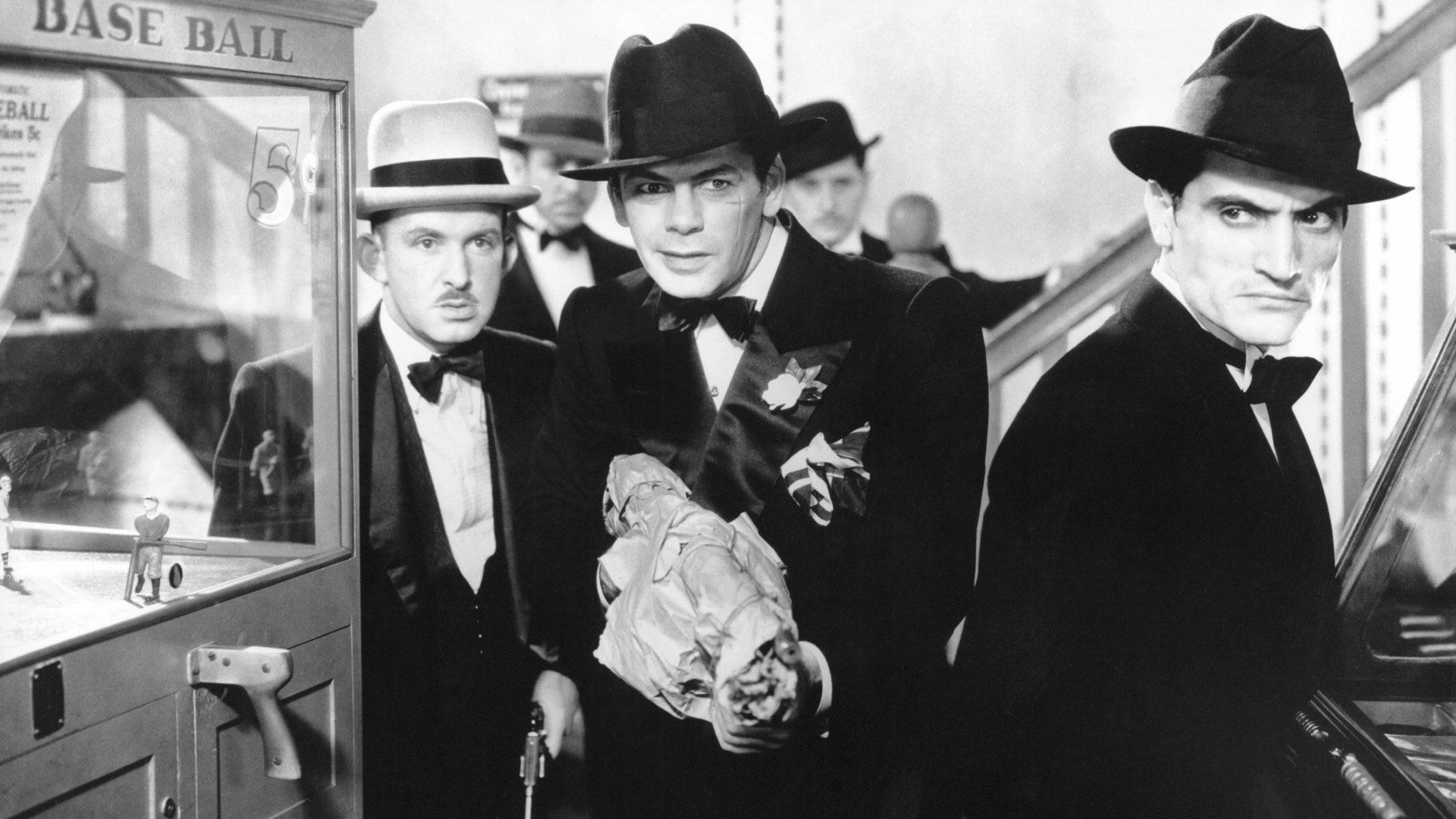Rata-Tat-Tat
Howard Hawks is the least appreciated of the great American directors. It took the critics from the Parisian magazine Cahiers du Cinema in the 1950s to recognize the consistent style and world view behind such dissimilar films as Scarface (1932), Bringing Up Baby (1938), Air Force (1943), The Big Sleep (1946), Red River (1948), The Thing from Another World (1951), and Gentlemen Prefer Blondes (1953). Of Hawks’ many best-of-breed genre films, Scarface is the most underrated. Producer Howard Hughes withheld the film from circulation in the U.S. after its initial release, so it was almost impossible to see until the 1970s. You had a better chance of seeing the film if you lived in Paris than if you lived in New York or Los Angeles.
Scarface is far more complex thematically and visually than Little Caesar (1930) or The Public Enemy (1931), and much more satisfying. Tony and his henchmen attend a theatrical performance of Rain, another cautionary tale about a man who tries to impose his will on others. Tony has to leave the theater early, missing the downfall of the play’s tragic figure, in order to set in motion the events that will lead to his own downfall. Like the men in Hawks’ Only Angels Have Wings and Air Force, Tony and his gang react to life-threatening situations by creating their own rules of conduct and honor. The group is fiercely loyal until someone deliberately crosses the line to threaten the cohesiveness of the group. In virtually all his films, Hawks explores the interplay between individual initiative and group co-operation. It’s the dynamic push-pull between these two forces that drives the characters’ actions and moves the story forward to its logical conclusion. With the Hawks comedies, that universe is turned completely upside down.
Hawks and scriptwriter Ben Hecht populate the sets in Scarface with symbolic Xs and crosses. Look closely, and you’ll see them throughout the film, particularly at critical junctures in the plot. During the production of the film, Hawks ran afoul of the studio censors, who were repelled by the large number of murders and cold-hearted glee with which the gangsters carry out their revenge. Hawks was forced to insert a high-minded introduction and clumsy moral-indignation scene to soften what was thought to be a dangerously immoral film. Hawks also had to tone down the ending. He had wanted Tony (played by Paul Muni) to end face down in a pile of horse manure.
This isn’t just the best gangster movie ever made. It’s a landmark film of the early 1930s, and the first mature work by one of Hollywood’s preeminent directors.
Scarface
(1932; directed by Howard Hawks)
Universal (Blu-ray and DVD)
Tuesday, January 7 at 8:00 p.m. eastern on Turner Classic Movies
Reviews